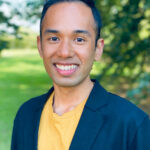New Year – New Creative Phase
As we rang in 2021 from home, the Biomedical Design fellows also entered the creative phase – from home.
I have always thought of myself as a naturally creative person. But, having been in academia my whole life where structure and formality (sometimes) outweigh being disruptive, I was so excited by the creative sandbox prepared by our mentor Pernille Kølbæk. Pernille’s expertise as an experience designer and her experience at LEGO, really intrigued me ever since the beginning of the program. It’s not just a fancy title, it also makes a lot of sense. And I have always been curious to learn how “play” is used in driving innovation. The kid in me was ready.
Grounded by Covid-19
But it wasn’t an easy journey. The impacts of COVID-19 were still very much felt around the globe. The situation kept evolving and we were ultimately forced to work from home. So how much play can you actually do during lockdown? Thanks to Pernille’s quick thinking and ability to adapt, she redesigned the whole curriculum to work in an online space. And from my perspective, it actually worked out for the best!
New situation – new tools
We kicked-off the creative phase by migrating to Miro, an online collaborative tool, that works pretty much like an electronic whiteboard. It was the perfect medium for doing all the fun activities lined up to exercise our creativity. We started out by unpacking the healthcare needs we had identified by working on a creative design brief. This was quickly followed by the introduction of ideation tools and techniques, with the help of Syddansk Sundhedsinnovation, Randi Lehmann (The “Crazy 8s” is one of my favourites).
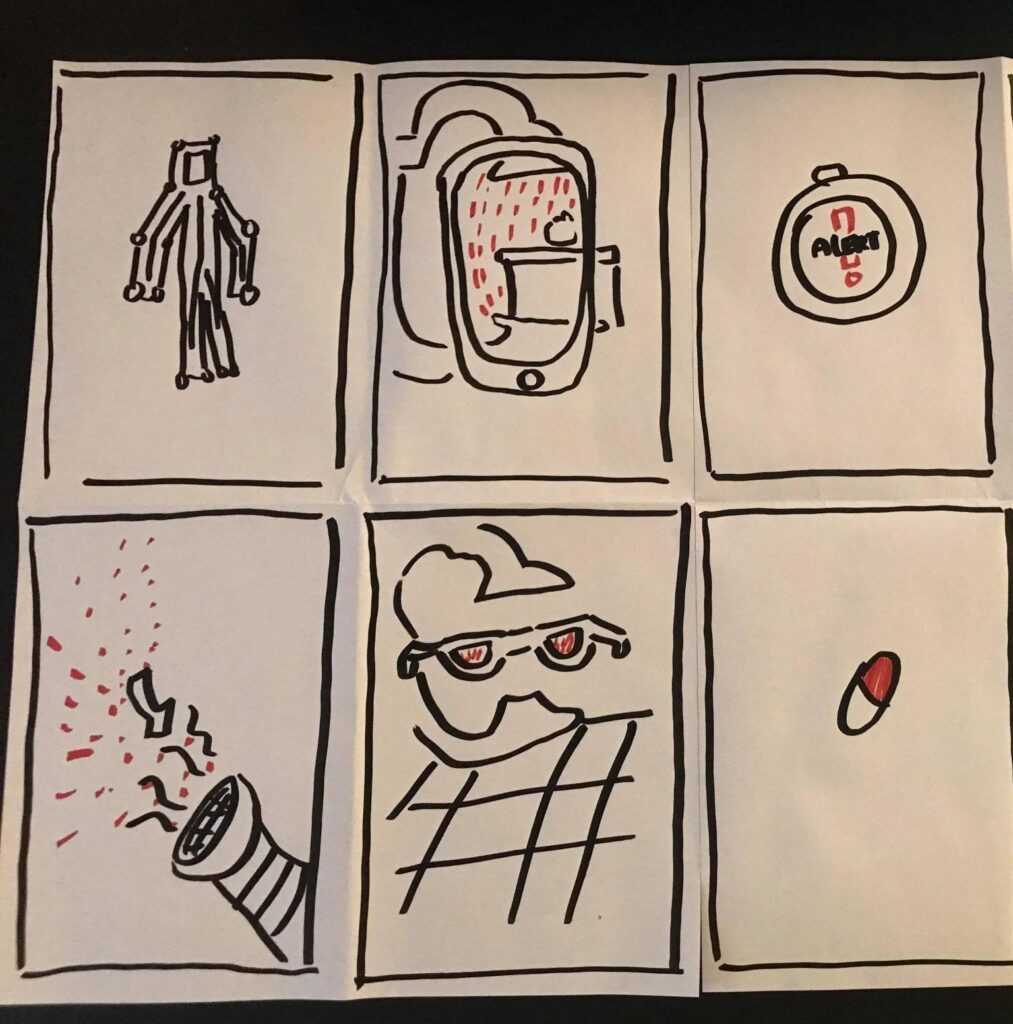
Rapid prototyping
Using random materials that we could find at home, we were also trained in creating rapid prototypes for our ideas. Given a very short time limit, we were forced to be quick, resourceful, and effective in translating our imagination to something malleable. This proved fun and useful for us in coming up with solutions – ranging all the way from the silly to the promising ones.
Testing, testing, testing
Equipped with the necessary facilitation skills we were able to go out and ideate with external experts and contacts. We were also fortunate to learn from IDEO U teaching lead, Bre Przestrzelski, on the essentials in facilitating co-creative sessions. In collaboration with the Kitchen, Aarhus University’s start-up hub, Pernille prepared two ideation sessions for us to practice our facilitation skills in. Leaning into the program’s timeline, my team, composed of Camilla Waldstrøm, Mercedes Marin, and I, organised four online external ideation sessions with 20 experts from various fields. Tapping into our new learnings, we were able to successfully come up with clearer solution directions for our healthcare needs. To break out of our zoom fatigue, we would sometimes sneak out and work together in person 🙂
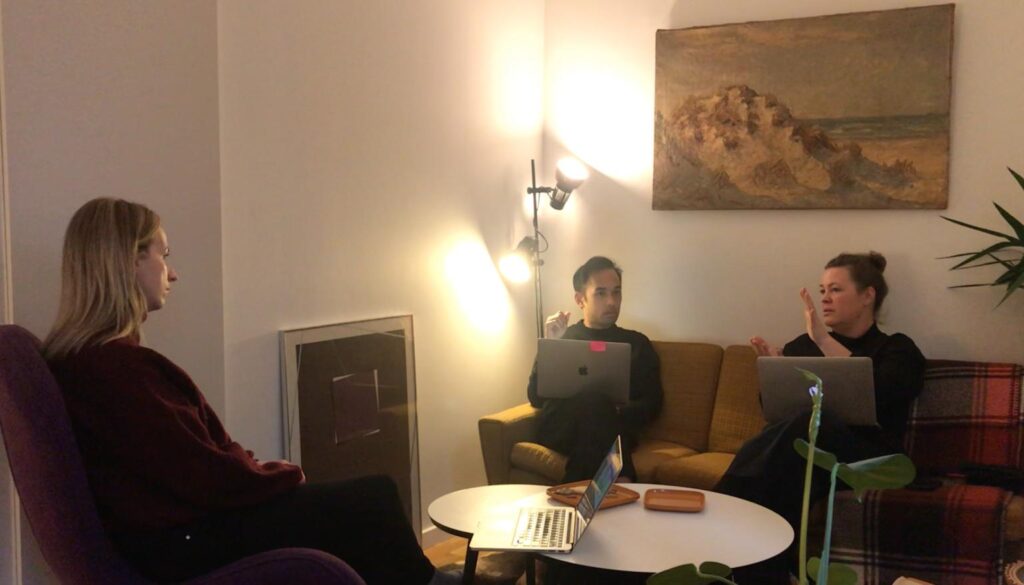
And even more testing
To help us see if the solution fits our users, Randi Lehmann returned to give us a workshop on scenario training. This was a very fun workshop where we had to role-play our users in an online space to uncover gaps in the solution. Pernille then invited Martin Ibsen and Peter Lindberg of Syndicate for a very insightful idea exploration and value proposition workshop to help us unwrap the value and potential of our healthcare solution ideas. Martin and Peter challenged us to test our solution hypotheses by testing out our pretotype. My team rose up to the challenge by organising a rapid test on 30 participants over 5 days. Our efforts paid off as this revealed how a small focused experiment can help set the direction of our product development. My team celebrated by sledding down a snow hill and clinking a glass or two (or three).
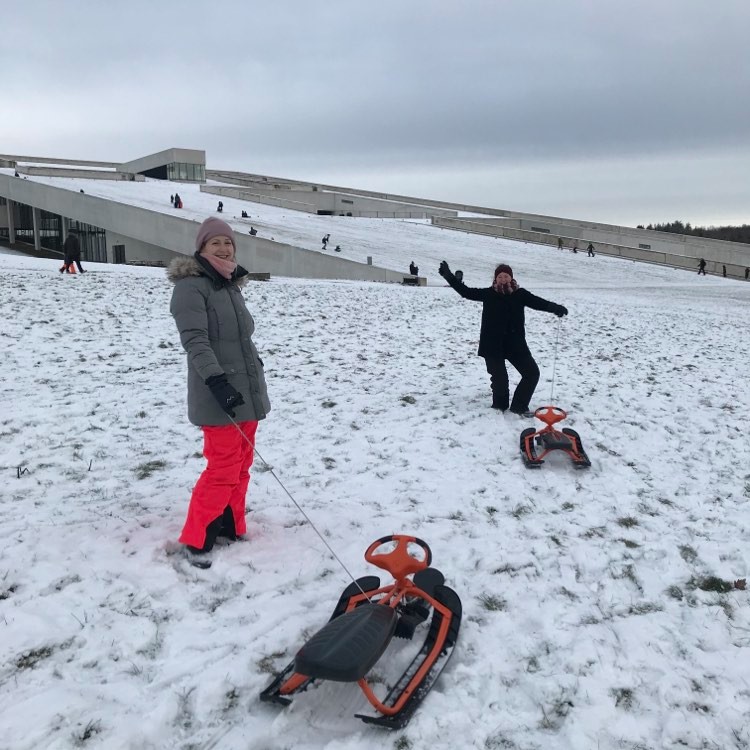
Structure and formality are needs-to-have after all
Of course, not everything is fun and games, throughout this phase. We were also challenged by issues and sensitivities regarding idea ownership. This was really highlighted by instances where teams working on similar topics had to ideate internally with the same group of people. For me, this emphasized the importance of confidentiality and the use of non-disclosure agreements. It also offered an opportunity for self-reflection, and allowed us to re-visit our team values.
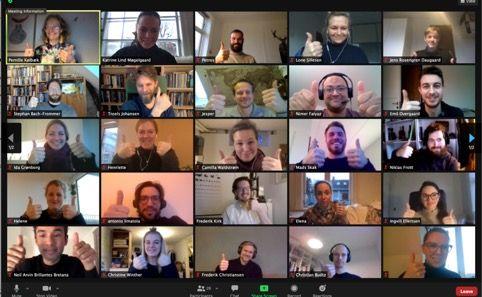
Time for a pitch
At the end of the creative phase, we were tasked to pitch our ideas to the Biomedical Design advisory group. We were nervous, but it turned out to be such a pleasant culmination for all the hard work we have done in this phase. It allowed us to consolidate all our results and bring our ideas one step closer to becoming a start-up. Looking back at what we just went through, Pernille’s creative phase curriculum exceeded my expectations. I might not know how it is sans lockdown, but all I can say is, I wouldn’t have done it any other way.
